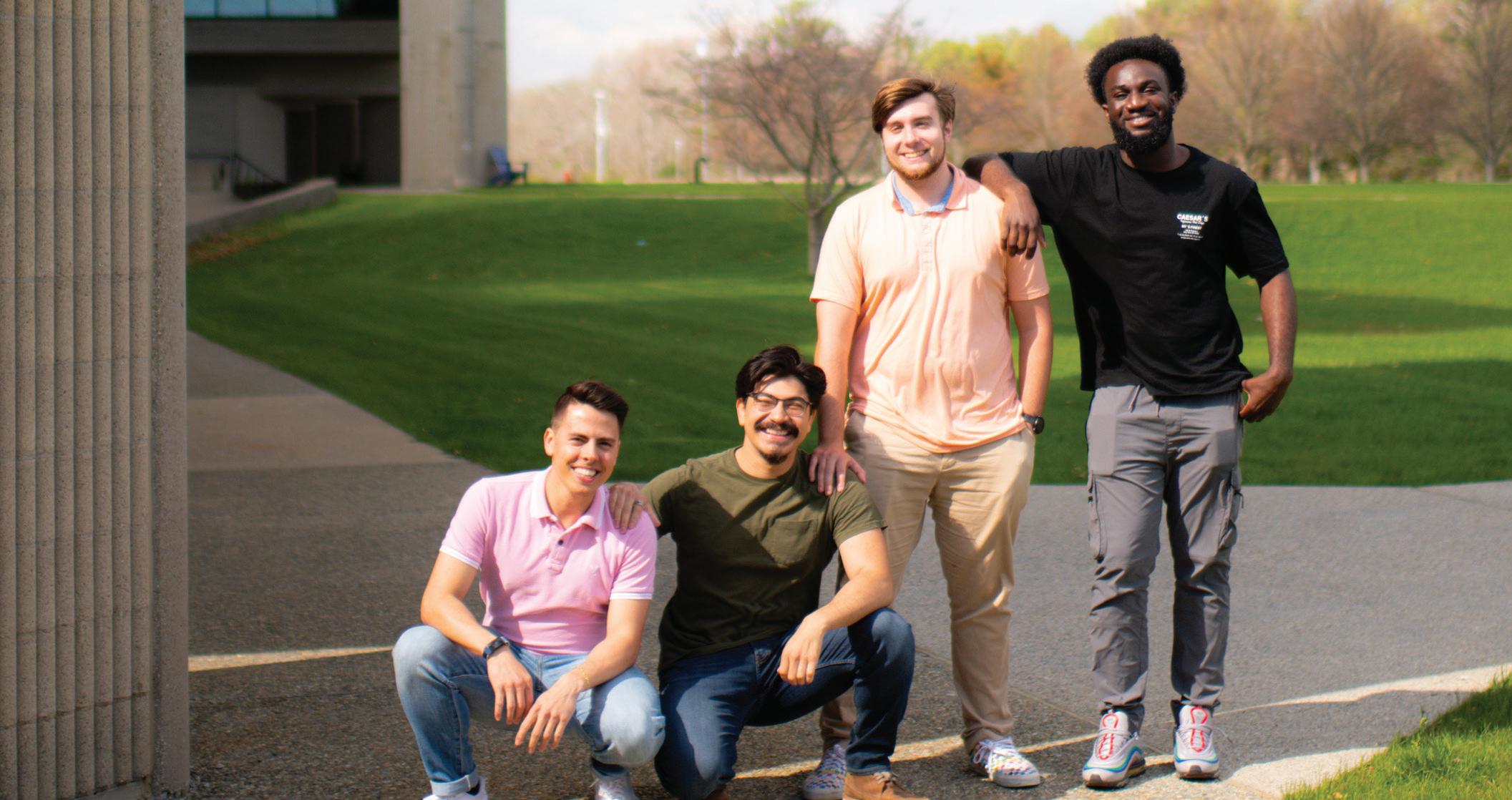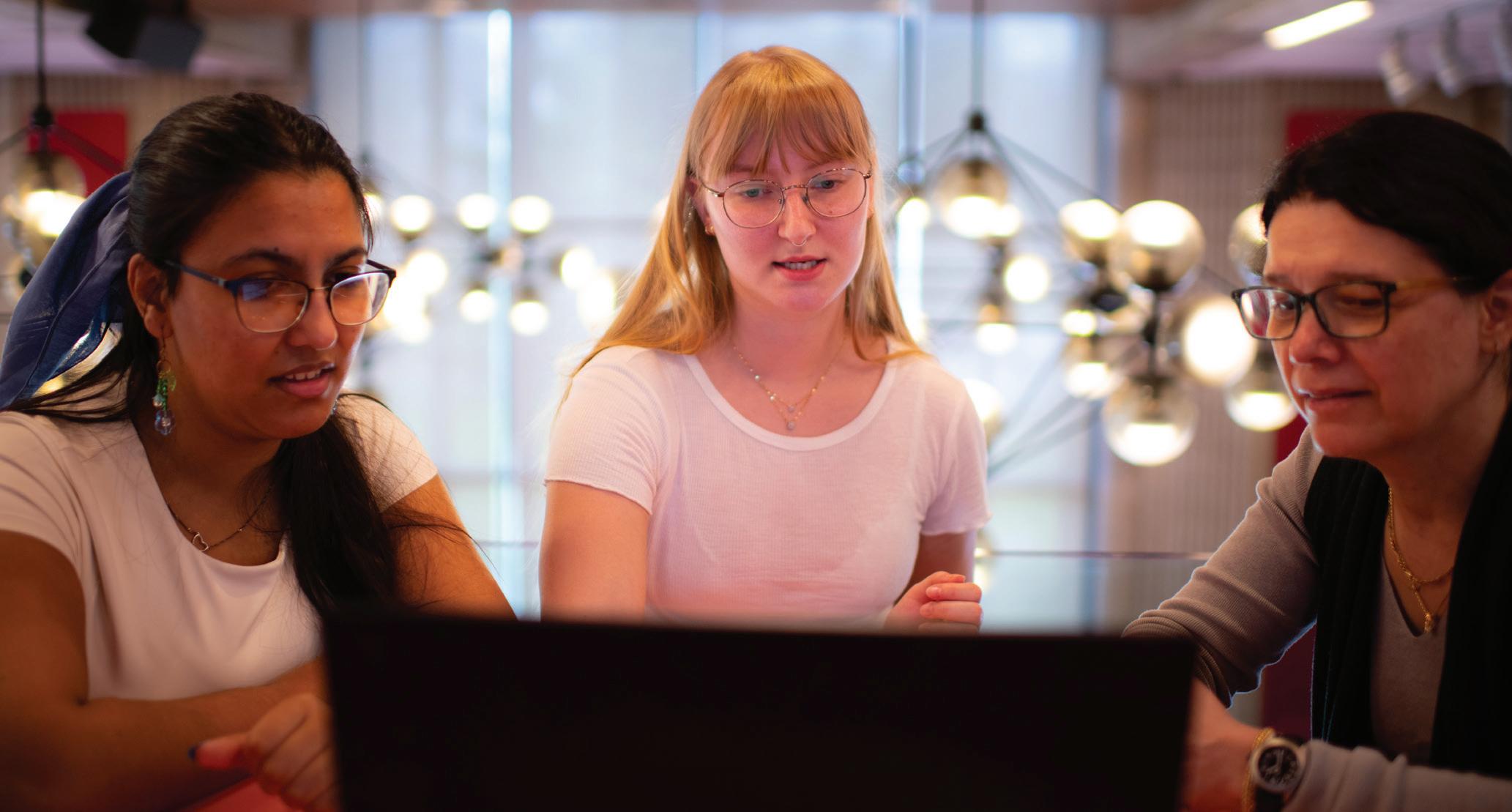
1 minute read
Capstone Spotlights: Students Take
on Real-World Engineering Projects
Undergraduate curriculum in the College of Engineering culminates in a capstone design project that applies information students learn in their four years of study. Working in teams, students apply their engineering knowledge to deliver real-world solutions to their corporate or academic “client.”
Claredon Hill Reconstruction Project - Civil and Environmental Engineering
Team: Moises Lopez, John Lucas Guimaraes, Ma hew Tempone, Evan Vasconcellos (lead) and Nana Kwame Korankye.
Sponsor and Client: Tetra Tech
The problem: A traffic circle in Somerville, MA was causing safety problems and confusion, presenting a hazard for drivers, pedestrians, and nearby residents.
The solution: The team developed three possible alternatives to the current road design and chose a T-intersection solution. The intersection redesign will reduce speeding and increase efficiency of traffic flow, while considering drainage issues, environmental impact, and other concerns.
In pitching their design to the town board and city of Somerville, the team appealed to the public interest, providing data on how their reconstruction would decrease traffic, make streets safer for pedestrians, and provide more green space for community residents.
CAPS - Creation of Accurate and Precise Surveys – Computer Science

Team: Sarah Santiago (lead), Elisa Normand, Elijah Karpf, Liam Ray, Douglas Bell
Sponsor and Client: Naval Undersea Warfare Center

The problem: Surveys can yield important insights from respondents, but only if they ask the right questions. Bad survey questions can produce biased answers. Biased answers are, ultimately, unhelpful in collecting accurate information from a survey or questionnaire. Survey creators need a mechanism to ensure that the questions asked in their surveys will support their efforts to collect accurate information. The mechanism must also be highly user-friendly for non-experts.
The solution: The CAPS team developed a so ware program that would help users eliminate bias from their surveys and ask be er questions. The program does this by flagging problematic questions and providing feedback as to why the question might yield a biased answer. Users can type a question into the program and the so ware will analyze its content to identify potentially loaded or leading questions. CAPS can also check for double-negative questions (which can be misleading) and double-barreled questions (also known as compound questions, which ask more than one question while only allowing for one answer).










